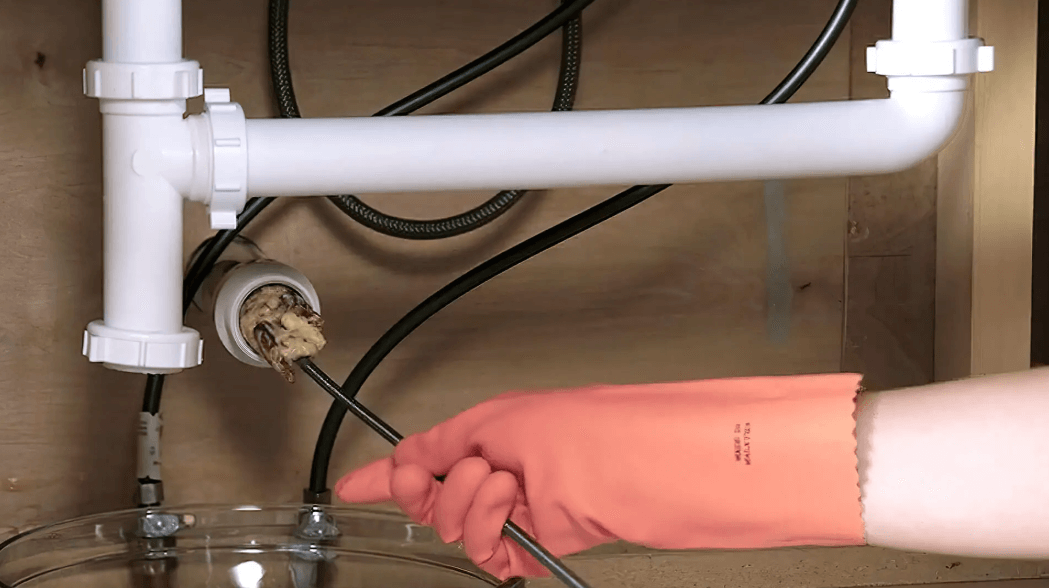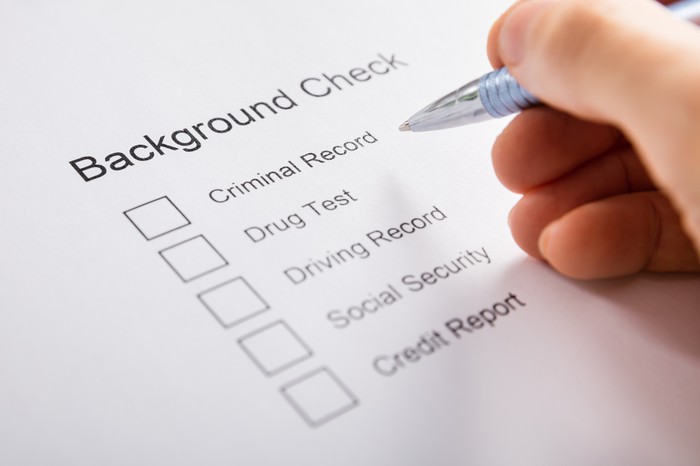There are many reasons why you might be interested in selling your domain name to someone else. Maybe you own a website that you simply don’t want to operate anymore. Maybe you’re just interested in getting into the world of domain flipping. Likewise, if someone buys out your company, they will be buying out your site as well.
Domain flipping is the practice of buying domain names based on their estimated value with the intention of selling them back for a profit. You might have also heard of similar-sounding practices in other industries, such as house flipping or car flipping. Domain flipping works in—more or less—the same way.

Unlike selling off a physical item, though, a domain name only really exists as electrons floating around in a web server. Furthermore, because domain names are mostly used to host a website, they are more like large-scale pieces of empty land than a simple commodity. Because of these irregularities, it can be much harder to sell a domain than you might think. Luckily, there are plenty of resources out there to help get your digital “auction house” up and running.
Before starting to sell (WHOIS, appraisal, development, etc)
One of the first things to take care of when trying to sell a domain name you own is to make sure your contact information is listed on the WHOIS lookup for the domain in question. WHOIS, or the Registration Data Access Protocol (RDAP), is a protocol run by ICANN (the Internet Corporation for Assigned Names and Numbers) that exchanges data about a domain owner (retrieved in real time from registrars and other sources) in response to a domain name lookup. For example, a WHOIS search for 101domain.com looks like this.
This is an essential step because, of course, when you buy a domain name, you make it unavailable to someone else looking to register. Someone looking to register a domain name that you own, will first try to find it on their preferred registrar. When they see that it already belongs to someone else, and if they are committed to obtaining the domain, their next step will be to do a WHOIS query to find out who owns it. You want to make it as easy as possible for people looking to buy your domains to find you and reach out to you. When you register a new domain, you will be required to enter at least a little WHOIS data, depending on various factors, but it behooves you to enter as much as possible. In your WHOIS data you may also want to include that your domain is for sale.
Sometime between obtaining the domain you intend to sell and finding a buyer, you will also want to get your domain appraised. There are a lot of factors that can affect what amount your domain will be estimated to sell at. One of the biggest variables is traffic, or how many visits the domain gets. Domains that get lots of visitors from the get-go are more valuable to buyers because they can be guaranteed at least a little bit of success before any transaction is made.
Characteristics about the domain also affect its value. Typically, domains ending in .COM are the most sought after, but this is not always the case. Likewise, short domains, especially those consisting of only two or three characters, are also more valuable because there are so few left.
Luckily, you don’t need to be a financial expert to figure out an accurate value for your domain. You can use a service like Namebio to get a rough estimate about the potential value of your domain based on the amount for which similar domains have been sold.
The last thing to consider before trying to sell your domain is whether or not you’d like to develop your site. A developed domain is one that already has some kind of website hosted on it so that visitors to the domain don’t just receive an empty page. This kind of development is just like how you might develop land by putting up houses, farms, etc on it to increase its value. Some domain sellers argue that developing a domain before selling it is an essential practice that drastically increases both the odds of finding a buyer and the amount that they will be willing to pay. Others insist that developing a domain is pointless, since the buyer will likely completely change everything to put into the domain before using it. You could also make a placeholder site that is as simple as a picture of a “for sale” sign, but at the end of the day, the choice is yours.
Reseller or End User
When getting ready to sell your domain, you need to think about whether you want to sell the domain to a reseller or an end user. Basically, a reseller is part of the liquid domain name market. They’re essentially doing what you’re doing: buying domains exclusively with the intent to “resell” them for profit. These types of buyers are usually more willing to buy from you immediately, but they may not be willing to buy your domains for as much as someone like an end user (they won’t offer you more than they think they could resell for, after all).
End users are buyers who are looking to obtain a domain to use for their business or some other permanent use. Selling to this group of people can be a little more difficult since they aren’t looking to get involved in the domain name market, they’re just looking for a domain to use for their website. They also may be more reticent to buy, since they are making a much bigger and riskier purchase.That being said, if you happen to own a particularly valuable domain, an end user may be willing to pay top dollar to use it. The domain name insurance.com, for example, was sold in 2010 for over $35 million. However, the domain seller was sitting on the name since 1994. That’s a whole 16 years to wait!
Online Auction
Once you have your domain, a price in mind, and know your potential customers, it’s time to put your domain up for sale. One easy way to sell a domain, especially to other resellers, is to put your domain up for auction on an online service. Most of these services work more or less the same way: you put up your domain listing, and if someone sees it or searches for it, they can enter a bid. There are many different services you can use for thisl, including Afternic, Flippa, and even eBay.
The advantage of this method is that it makes your domain listing very visible and easy to find. It’s also a very passive process that doesn’t require much work on your part once the domain is listed. However, this option only really appeals to the reseller market. Most people looking to buy and then use a domain name won’t be browsing eBay looking for deals. The bottom line is that this option is quick, easy, and convenient, but you probably won’t be making any multimillion dollar deals at auction.
Brokerage
Another option that can save you time and energy is to use a broker. A broker is a person who you hire who will do the legwork of trying to sell your domain on your behalf. They usually either charge a fee or commission. Depending on the domain you are trying to sell, a broker might be your best option. If you have a particularly valuable domain that you believe will net you a significant profit, but have no idea who to sell to or how to contact them, a broker can step in and do that work for you.
Unlike auctioneering, a broker is a better choice for trying to sell to end users. A brokerage service is a more long-term selling option that requires a high profit per domain to cover the costs, meaning it’s not ideal if you own a large portfolio of low-value domains, but is very ideal if you own a portfolio of any size of highly valuable domains. If you manage to land a domain like the above insurance.com, for example, a broker is a great asset to have on your side. Brokers are also helpful for those who are newer to domain selling and may not be totally confident in their own abilities to find a buyer and make a profitable deal.
A key misconception about domain brokers is that their job is to not only find a buyer but also to find one that’s willing to buy at or above whatever your asking price is. They work similarly to a real estate agent, and their goal is to negotiate a deal between you and a potential buyer, not magically return having sold your domain for whatever amount you want. Domain brokers sometimes manage to reach a deal that exceeds your expectations, but don’t hire one assuming that this will be the case. As always, the earning potential of your domain depends on the factors listed in the appraisal section of this article.
Email / Cold Call Campaign
Last but not least, if you own a domain that you think would appeal to a very specific market, you can initiate an email or cold calling campaign to reach out to potential buyers. These techniques are only going to be effective for selling to end users because the market is significantly smaller and slower, and because its success rests on having a name that you KNOW will appeal specifically to the companies or people to whom you reach out. For example, trying to sell a domain like car.fax over the phone is unlikely to yield any results, except if you call the offices of CarFax the company.
There is some debate as to whether cold calling is effective at all. This blog post by SEOhosting.com, for example, shares an experience the author had with a cold caller attempting to sell a domain. He explains to the caller and, to the audience, cold calling is a poor sales technique because it is bothersome, and because people innately distrust telemarketing. Cold calling is also a more “old school” technique, namely because it has been usurped by more effective, technologically advanced options like email campaigns. That being said, a phone call costs next to nothing, so it may be worth giving it a try.
A similar approach to cold calling that avoids some of its pitfalls is an email campaign. Just like with cold calling, an email campaign involves reaching out to a potential buyer to offer a short sales pitch for your domain. However, by using email, you avoid interrupting your buyer’s day, as well as giving them more time to think about, research, and respond to your offer. Like phone calls, sending emails are free, which makes it a cheaper method than using a broker.
Getting Ready to Sell
Once you manage to find a buyer for your domain, you can start the process of transferring ownership. The general process for domain names with no special qualities goes more or less as follows:
First, you will have to turn off WHOIS privacy on your domain, if it is enabled. You may also need to unlock other options, such as the update lock and transfer lock. You will then need to obtain a Transfer Access Code. The buyer will receive this code later in the transaction to get started using their new domain.
Next, you will want to use an escrow service. Depending on how the transfer is being performed, you may have different options available. Some registrars, such as 101domain, offer a concierge service through which this entire process can be performed. This is great for avoiding having to introduce an additional outside party, but traditional escrow services will also work just fine. The escrow will hold onto the access code and the payment your buyer submits for the domain.
The escrow service will confirm that the funds for the purchase have been received and are clear, provided that all goes well. The escrow will then release the Transfer Access Code to the buyer and they will begin to transfer your domain to themselves. This process can sometimes be a little complicated, so if you’re new to domain selling, you may want to have a concierge service like 101domain’s help you out from the get-go. Once the buyer confirms that the domain has been successfully transferred, the escrow will release the payment to you. And then you’re done! Congratulations on your first sale!








